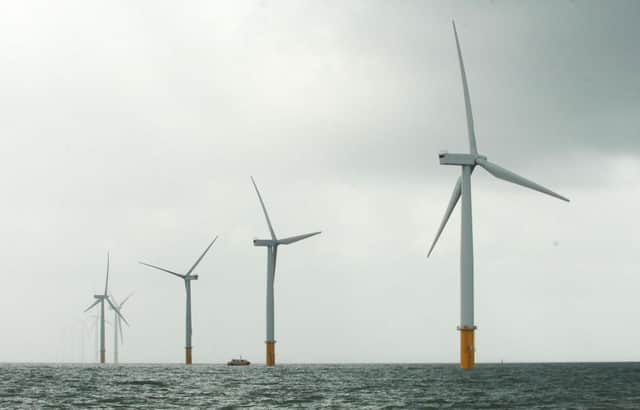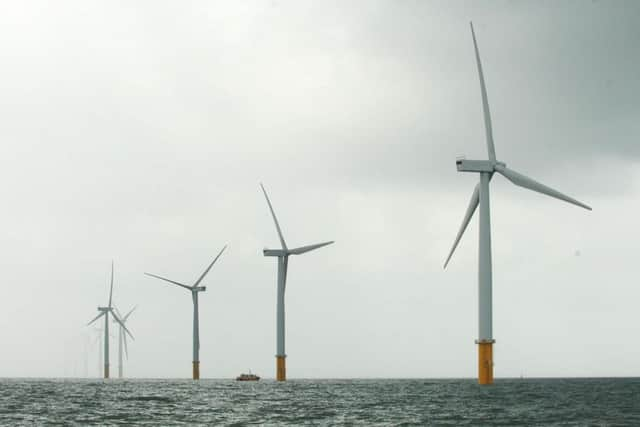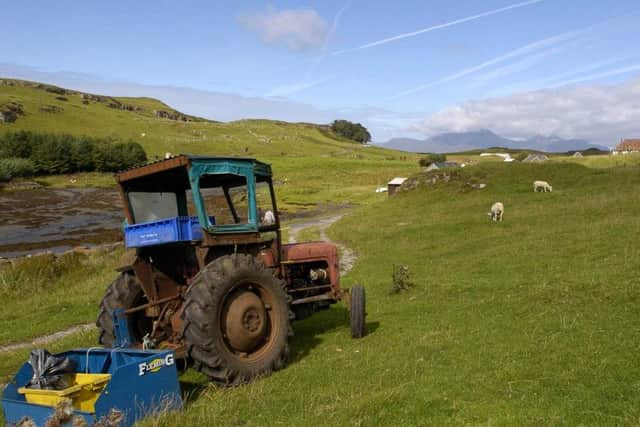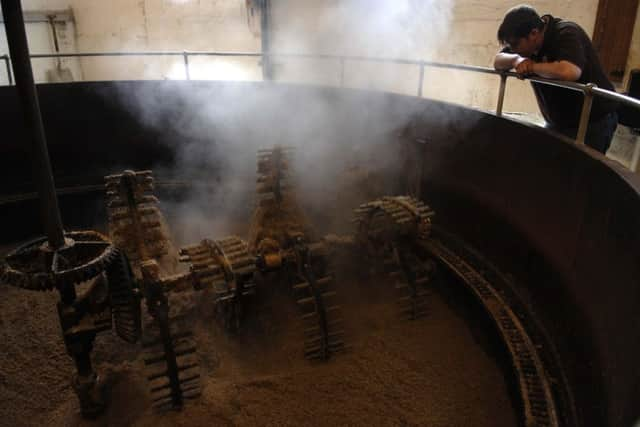What impact will climate change have on Scotland?


Coastal habitats could be lost
If sea levels continue to rise at current rates, as a result of the melting of the polar ice caps in the face of rising sea temperatures, some of Scotland’s coastal habitats could be lost entirely. This is a particular concern in places where coastal defences stop those habitats from migrating further inland. Right now, 100 hectares of salt marsh and mudflats are lost in the UK each year as a result of rising tides and the resulting erosion.
Increase in flooding


Increasing rainfall and changes in rainfall patterns mean that Scotland’s 50,000 km of rivers are likely to flood more often, causing damage to property and transport networks, disruption of services, loss of business, even risk to life.
Advertisement
Hide AdAdvertisement
Hide AdSince monitoring began in 1961, the east of Scotland has seen a 36.5 per cent increase in precipitation, while the north and west of the country have seen a 67-69 per cent rise – leading to a notable increase in the frequency of floods and landslides in that time. The UK Climate Impacts Programme has predicted that in coming decades the number and severity of storms in Scotland could increase, leading to increased risk of flooding – river flows have already shown significant increases over the last 80 years.
In addition to rising rivers, observed sea level rises also pose a threat in terms of flooding, as Dr Caroline Holmes, a climate impact scientist at Edinburgh University’s School of Geosciences, said: “Storm surges by the coast last January in Scotland saw coastal flooding and damage to roads and properties, and we will see more of that. Salt water intrusions will compromise the safety of the freshwater supply. This is something we should expect to see over the coming decades – certainly within our lifetimes.”


The Scottish Environment Protection Agency has produced a map of areas at risk of flooding, showing 100,000 properties lying in those areas – nearly 4 per cent of Scotland’s total properties. The cost of flooding in Scotland averages more than £50 million – one flood alone in Elgin in 1997 caused £100m of damage, with 1,200 people needing to be evacuated.
Rising temperatures
Records show that average temperatures in Scotland have increased by 0.5°C in the last 100 years. While warmer weather might sound like no bad thing for Scotland, and will see a reduction in cold-related deaths, rising temperatures caused by climate change mean erosion and drying out of some natural habitats that could threaten wildlife – some parts of the country have become 45 per cent drier in summer. The first six months of 2010 were the second driest recorded in the UK in 96 years, which caused river levels across the UK to drop by up to 50 per cent, leading to fish deaths and canals being closed.
Advertisement
Hide AdAdvertisement
Hide AdDr Holmes confirms that observation, saying: “2014 was the hottest year in the Met Office records dating back to 1910, and the Intergovernmental Panel on Climate Change has ‘attributed’ global increases in temperature to human activity. That is, they can say that the increase in temperatures observed would be very unlikely to have happened without human influence. The last IPCC report suggested that temperatures are ‘very likely to continue to increase’, and likely to do so more in Northern Europe than the rest of Europe. Results specific to the UK suggest that in Scotland, we can expect 1-2 degrees warming in winter and over 2 degrees warming in summer by the 2050s.”


If temperatures continue to increase at current rates Scotland can expect droughts and heatwaves, which cause health problems for young children, the elderly and those with health conditions while increased sun exposure could see a rise in skin cancer in Scotland. The heatwave of summer 2003 – the warmest period in 500 years – caused 2,000 deaths in the UK, and the World Meteorological Organisation estimates heat-related deaths could double in less than 20 years.
Dr Holmes added: “Health is a big issue with climate change. In July of 2013 we saw a heatwave, during which there were health (and wildfire) warnings in all the papers, telling people to be aware of issues like heatstroke and dehydration. In the future, that kind of summer will become more what we expect, just an average summer rather than an unusual event.” And while an abundance of fresh water is something Scots have been able to take for granted, drought will also have an impact on water quality and supply.
Loss of animal and plant species


Climate change will have a direct effect on many species of Scotland’s plants and animals. Heavier rains will damage salmon spawning grounds, while higher temperatures will mean less mountain snow cover which will threaten montane plants. Disruptions in the cycles of the ecosystem could mean that young birds don’t hatch at the same time as their prey – caterpillars emerging before eggs hatch could lead to a lack of food for chicks – and flowers may not open when their pollinators are active. Droughts can threaten the survival of young mammals, plants and birds, and it is likely some species will be lost from Scotland if their preferred climate no longer exists here.
Advertisement
Hide AdAdvertisement
Hide AdCorsican pine, which is commercially important, is already under threat from red band needle blight – a fungus which thrives in climates warmer and more humid than previously found in Scotland. Other plant species that live at high altitudes in the Highlands such as Diapensia, Norwegian mugwort and cloudberry may not survive as the country gets warmer. The bee population, which plays a crucial role in our food chain, is already in a much-publicised decline.
New species will arrive in Scotland
Climate change has seen several new wildlife species begin to appear, migrating from the south as the climate in Scotland becomes milder and more habitable for them. While this may sound like a positive increase in biodiversity, and most new arrivals will have little impact on Scotland’s existing species, some will compete with existing residents for environmental resources, while others will bring with them the threat of new pests and diseases, such as Bluetongue Disease and Lyme Disease. Invasive non-native species are already causing environmental damage that costs the Scottish economy £500m a year.
Dr Holmes said: “The bee orchid was rediscovered in Scotland in 2003 and this is thought to be linked to increases in temperature. We have high confidence this will continue; plants and animals (including marine species) that need warmer conditions will be found here more often.”
The loss of the winter sports industry
The Met Office has warned that the Scottish skiing industry could disappear, taking local jobs with it, within as little as 50 years as winters become too mild for regular snowfall, with continuous decreases in snow cover already observed over the last 40 years.
Advertisement
Hide AdAdvertisement
Hide AdWith the winter sports industry worth £30 million per season, according to latest figures from national governing body Snowsport Scotland, this would represent a potentially devastating blow to local economies in Scotland’s mountain areas, which rely on this sector at times of the year in which other local industries such as farming and summer tourism are dormant, as well as to the country’s tourism economy overall – as well as the loss of opportunities for sports and recreation for those living in Scotland.
Changes to agriculture
Since climate affects soil formation, food production could feel the impact of climate change – one of the most tangible effects for the human population. Warmer temperatures could mean that Scotland could grow more food, as Professor Dave Reay, professor of carbon management and education at the University of Edinburgh and author of Climate Change Begins at Home and Your Planet Needs You!, says: “One of the most marked impacts of climate change in Scotland over the last 50 years has been the expansion of the growing season. Across most areas we’ve seen warmer temperatures extend the growing season for farmers by more than five weeks compared to what it was back in 1961.” However, as Dr Holmes observes, “While some crops will thrive due to longer growing seasons, crops that actually rely on cold weather over the winter will more vulnerable as frosts decrease.”
Global warming will also bring with it the threat of pests, diseases and non-native species which could harm crops and livestock, causing economic difficulties and increased pressure for farmers and food producers and rising food prices for consumers – which would also be seen on our imported produce, as climate change exerts the same pressures on the food industry in other countries.
As Prof Reay says: “Our greatest vulnerability to climate change probably comes through just how tightly connected we are with the rest of the planet. For instance, a devastating drought in the US can push up food prices here, while a major flooding event in Asia can damage our export trade. It’s this global interconnectedness that makes it clear that no country, even Scotland, would avoid the negative impacts of climate change in the 21st century. We are all in this together.”
Threat to the whisky industry
Advertisement
Hide AdAdvertisement
Hide AdSummer water shortages could threaten one of the industries for which Scotland is best known and loved around the world – whisky, which accounts for one quarter of the UK’s total food and drink exports.
With those exports generating almost £4 billion for the UK economy – with 38 bottles of whisky being exported and earning £135 per second – and the Scottish whisky industry employing more than 10,000 people, many of them in economically deprived areas, and supporting 40,000 jobs across the UK as a whole, any compromise to production would present a major threat to jobs and the economy, as well as a vital piece of the country’s cultural heritage – one which draws millions of tourists to the country, and the money they spend not just on whisky, but in the hospitality industry.
Renewable energy
Ironically, climate change could have a negative impact on one of the very things intended to halt its progress. Varying water availability will affect hydro-generation schemes, and the changes will influence Scotland’s capacity to generate weather-dependent renewable energy – an important industry and major employer for the country, currently supporting more than 11,000 jobs in the country, as well as an important weapon in the fight against continuing climate change. Climate change can also impact power distribution, as seen in the damage caused by extreme weather events such as floods and flash storms – the cost of which to repair won’t help already rising energy prices.
And finally... even haggis is under threat
Even Scotland’s national dish is not immune to the effects of a changing climate. In recent years, Scotland has seen an increase in lungworm, a disease which affects sheep and makes their lungs – a key ingredient in haggis – unusable. Since the disease is observed in warmer, wetter conditions, given the pattern of climate change in Scotland its incidence is only likely to increase here. With the haggis market worth £15 million a year in the UK and £1.2m in exports to 28 countries, this is potentially bad news for our economy as well as our Burns Suppers.
- This article was produced in partnership with the Scottish Government